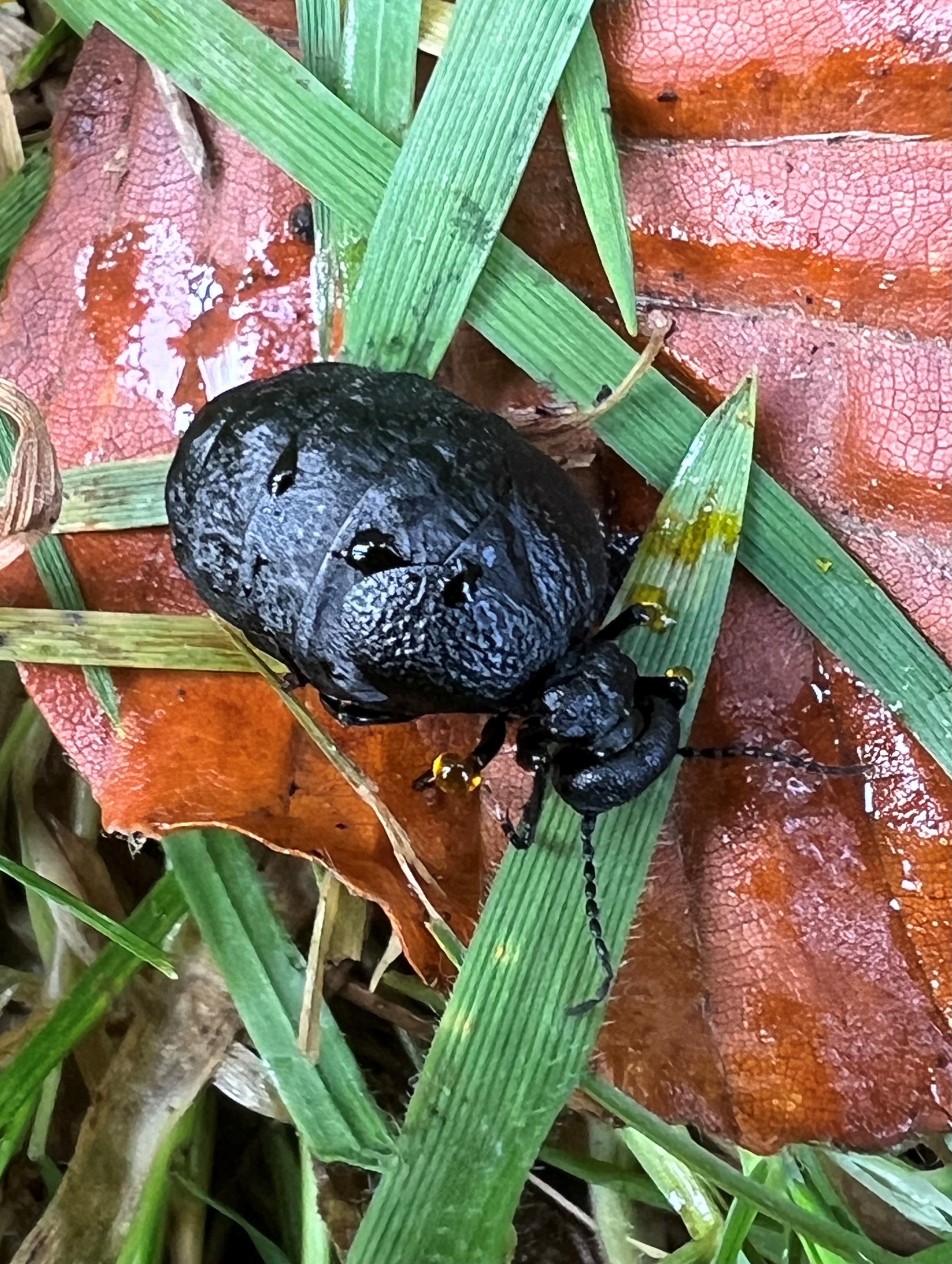When envisaging grassland, we may typically think of a traditional pasture or a wildflower meadow. However, even small grassland areas can offer connectivity to the wider landscape for nature, such as, wildflower margins and verges, churchyards, small nature reserves and community greenspaces. These are the smaller patches which can form part of a ‘green corridor’, helping to reduce the impacts of habitat fragmentation by linking and connecting existing habitats, or they can act as ‘stepping-stones’ to larger expanses of grassland and semi-natural areas.
Small pockets of grassland are particularly beneficial for nature when they contain habitat ‘mosaics’. These mosaics are created by a combination of specific environmental conditions and the management implemented. Examples of habitat mosaic within grassland might include dotted trees or scrub, woodland edge, pockets of wetland or heathland, dead wood and bare ground - as well as different grassland communities, sward heights and structural variety. Edge habitats are the transitional zones where two habitats meet, such as a patch of scrub between grassland and woodland. Edge habitats can add to this mosaic and with the right management can often become species rich. A diversity of habitats is important for biodiversity. Most species require a range of different habitats within a site or a wider landscape to complete their life cycle, and it is possible to incorporate mosaics even at a small scale. Mosaic habitats within small grassland areas may even be important for less common or rare species.
In a small grassland area, you could think about what ‘patchwork’ of habitats you could create, whilst considering the practical aspects, such as the conditions on the ground, the use of the site and the tools and help available to manage it. I’ve included some examples of small grassland areas within Oxfordshire and why these are valuable for nature.
Water Close was previously a disused allotment site within Asthal parish which has been sensitively ‘opened up’, cleared of debris and is now managed for both nature and as a community space. It retains some fruit bushes and trees and has a network of different habitats, including a patch of grassland containing wildflowers such as Ox-eye Daisy, Yellow Rattle and Wild Basil which grades into different habitats, including wood piles and woodland and scrub edge vegetation. The connectivity of these habitats support the population of slow worms present on site. This project received funding from the UK Sustainable Prosperity Fund (UKSPF) via West Oxfordshire District Council.
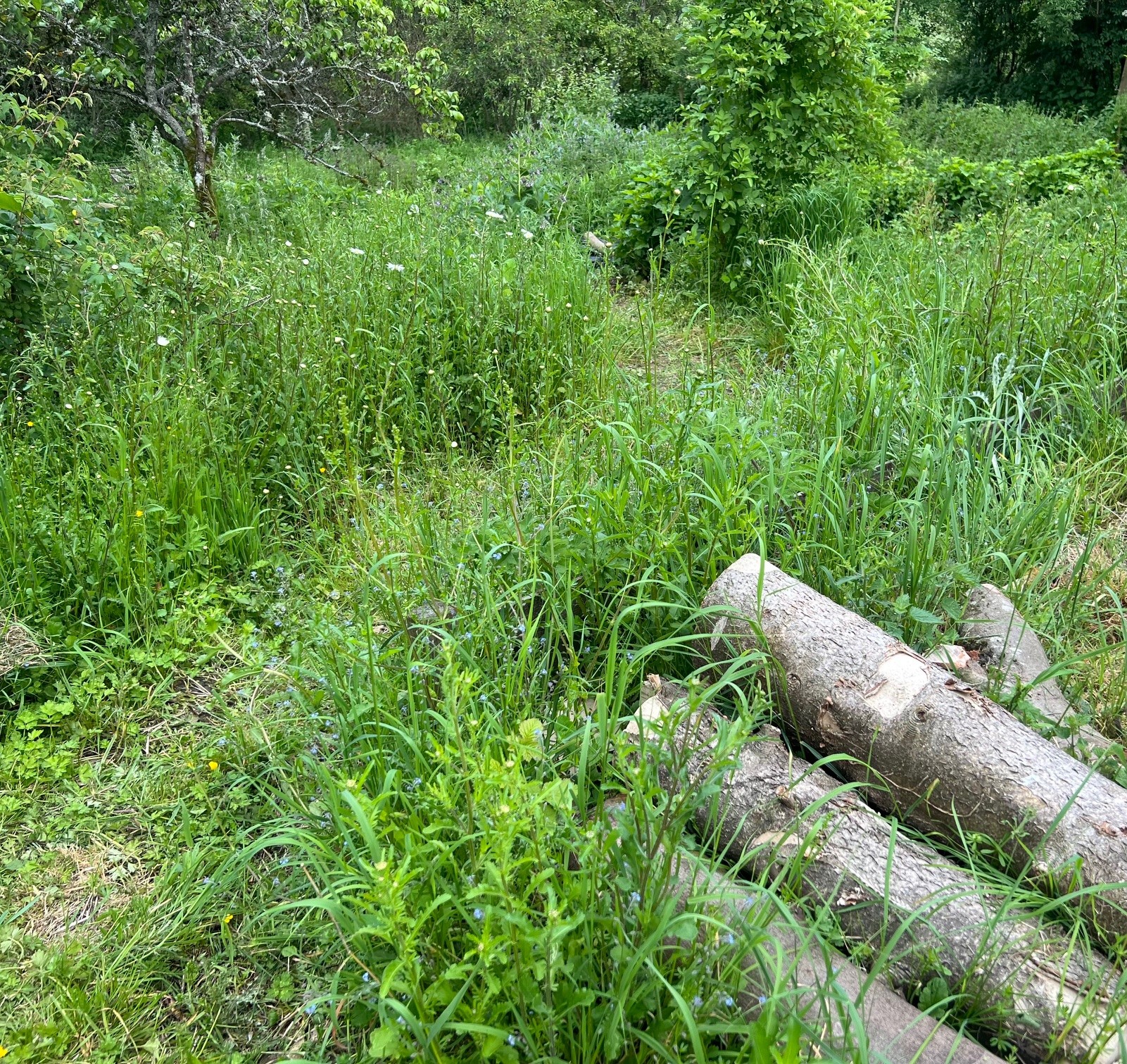
Bladon Wildlife Reserve was established over 25 years ago and has species-rich calcareous grassland which includes the UK rare plant, Meadow Clary, and anthills created by Yellow Meadow Ants. Anthills increase the range of micro habitats within the grassland and often unique communities of plant species and invertebrates associated with them.
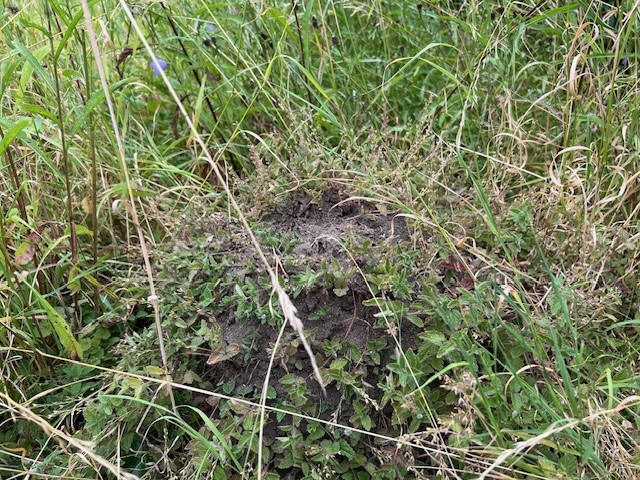
Old grasslands within churchyards typically contain a diverse number of wildflowers due to their history of lack of agricultural interventions, such as ploughing and the addition of chemical fertilisers. Adjustments to the mowing plans to allow areas to flower for longer will attract more diversity to the churchyard. A great example of what can be done is in St Andrew’s churchyard in Letcombe Regis. This churchyard has an array of flowers from the snowdrops in late winter, to primroses in spring, through to meadow flowers in late spring and summer. Grassland flowers within the churchyard include Kidney Vetch, the larval plant of the Small Blue butterfly. This butterfly, which is listed as a Section 41 species of principal importance under the NERC Act in England, has been recorded in the churchyard. St Andrew’s is one of the important ‘stepping-stones’ for biodiversity near to Letcombe Valley. The Caring God’s Acre website has fantastic resources on how to vary mowing plans to create flower-rich grassland within churchyards.
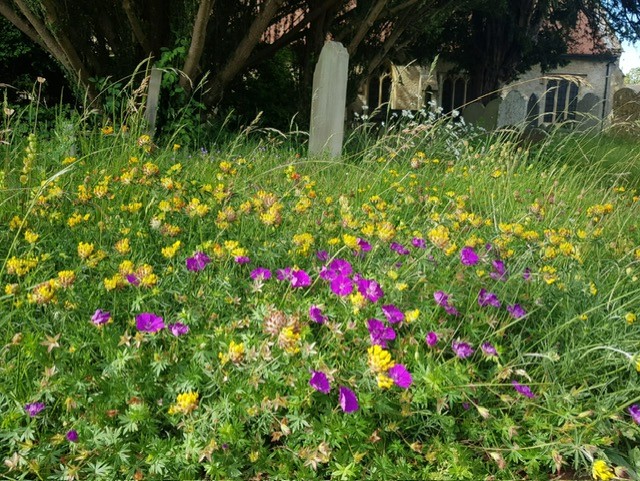
Brightwell-cum-Sotwell Community Orchard was established in 2014 and is managed by the community. The orchard, which was planted on a suitable site and received funding from Trust for Oxfordshire’s Environment (TOE), was under-sown with wildflowers to create a herb-rich wildflower understorey. The grassland understorey has developed well and is managed by volunteers who scythe the area and rake off the arisings. Read more information about the community orchard here: https://brightwellorchards.blogspot.com/
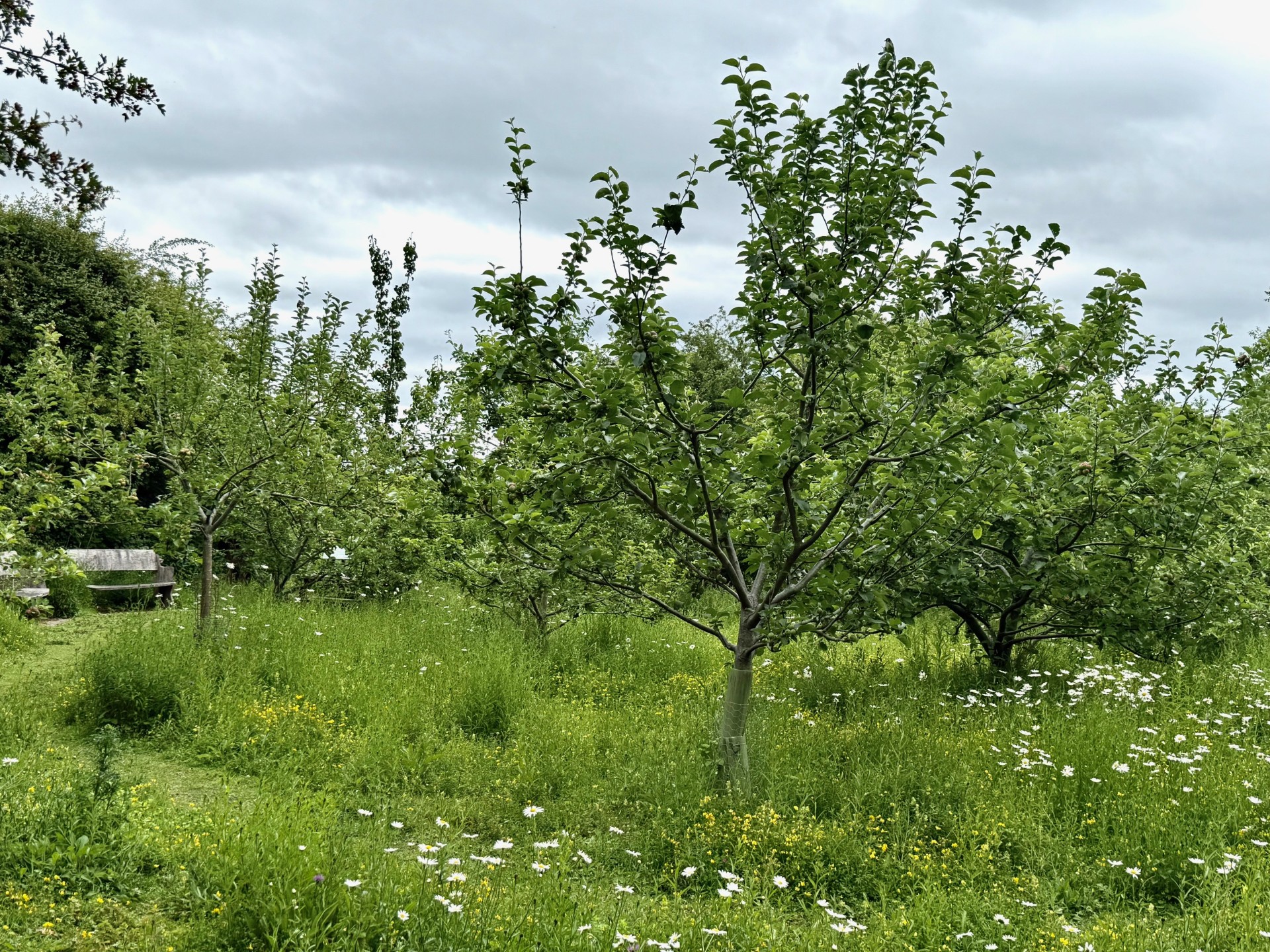
The photo below shows a Rugged Oil-beetle seen in a grassy woodland ride with heath speedwell, heath bedstraw and scrub near Nettlebed. These beetles are nationally scarce and are an indicator of species-rich grasslands. Oil beetles have an interesting lifecycle as they are nest parasites of solitary mining bees. Once the larvae (also called 'triungulins') hatch, they climb to the top of the nearest flower and wait for a solitary bee to arrive. They then hitch a lift on the bee to its nest and will then consume the pollen stores, and either the egg or larvae of the bee. Habitat management to ‘open up’ the glade by reducing the cover of bramble is benefiting this species by creating areas of bare ground for the solitary bees to nest and give more space to wildflowers, which provide pollen and nectar for the bees and the adult beetles.
